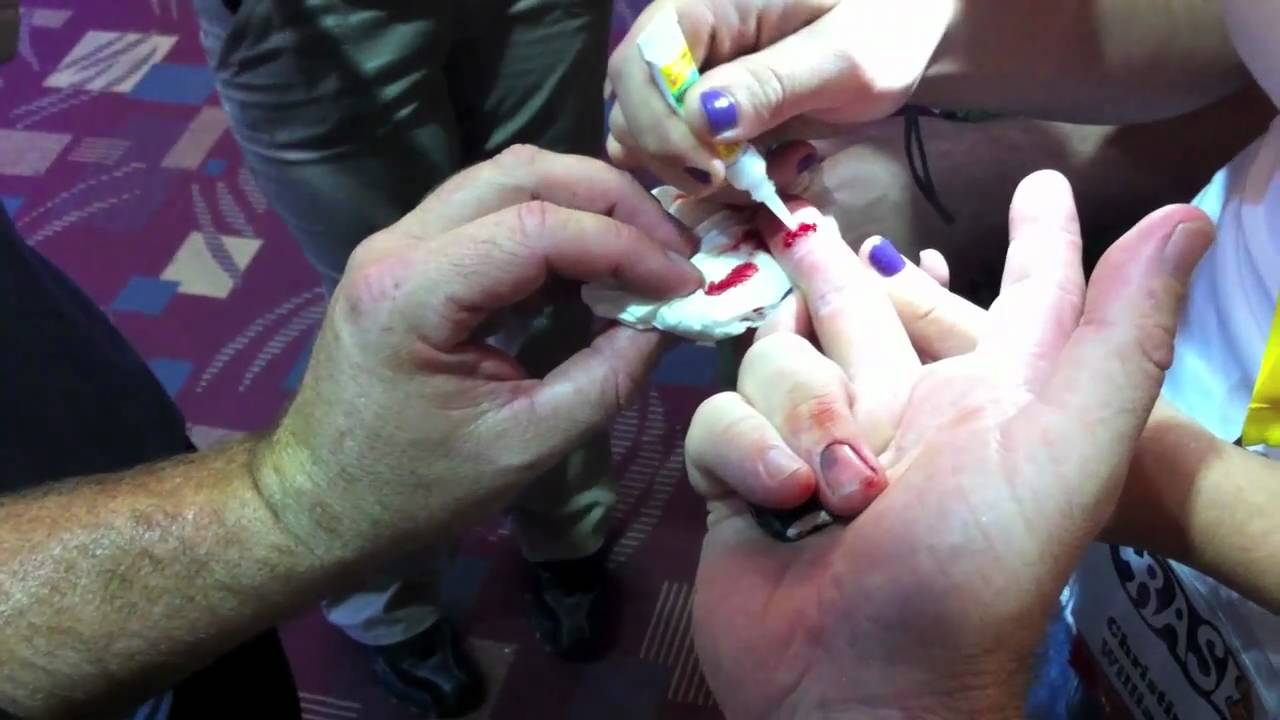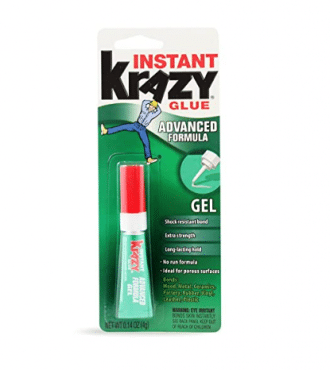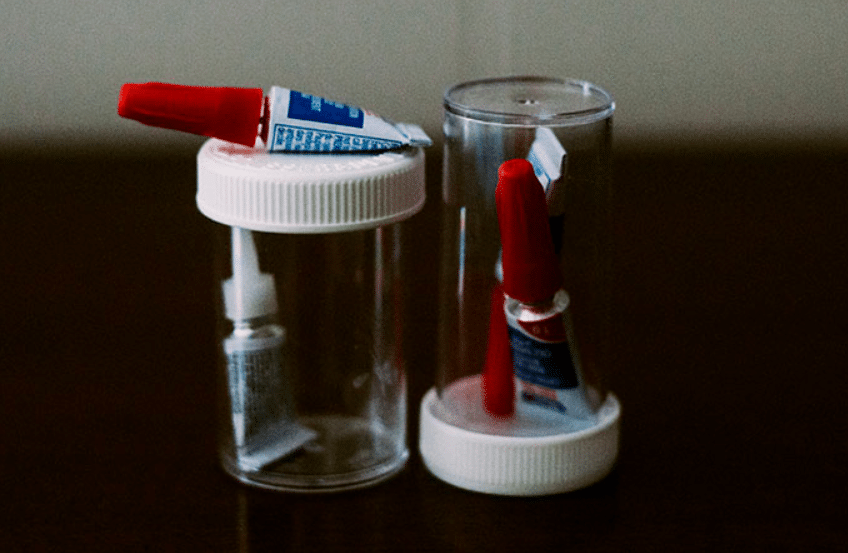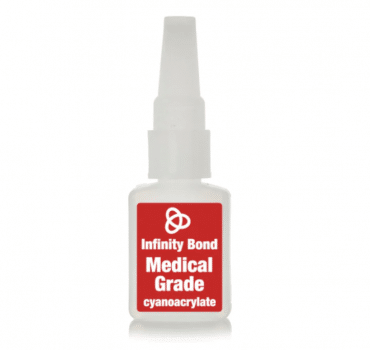Medical grade super glue can be called one of the most optimal variants for treating minor wounds such as cuts. It should be in any first aid kit. Of course, it’s far from perfect. Bigger injuries can’t be treated with it. But if you’ve cut your finger with a paper sheet or a knife, this method is really great. In this article, we’ll try to provide you with a full understanding of what superglue is and when this type of adhesive can and cannot be used.

Of course, many people don’t believe that super glue is safe and effective for purposes like that. They just can’t accept the fact that wounds can be treated with glue. But in reality, skin glue is a simple, highly available, and efficient medical device that leaves much less scarring after the healing process than, for example, stitches that can form rather unsightly scars.
What is superglue?

The glue that we’re discussing in this article is a resin-based acrylic. Its scientific name is Cyanoacrylate, or simply CA. Many know its household varieties Loctite and Krazy Glue adhesives. Its history can be traced back to the 1940s and 1950s. Firstly, it was meant to be used for clear plastic gun sights in World War II. But it was too sticky for this, so it was eventually re-purposed as glue. In the Vietnam war, US medics frequently used this adhesive to stop soldiers’ wounds from bleeding.
The three main advantages of this glue are that it is incredibly quick, firmly seals the wound from harmful outside factors such as infections, and prevents the forming of large scars. It is often used with various medical devices, such as surgical tools.
Which super glue is the best for medical use?

First of all, this adhesive becomes hot on the skin due to a so-called exothermic reaction. Thus, it may worsen the wound condition and harm the tissues around it. Secondly, it emits such dangerous chemicals as formaldehyde and cyanoacetate, which can cause irritation of various organs from the eyes to the lungs.
To avoid those unpleasant effects, a safer version of glue was created – especially for medicine and surgery. Nowadays, there are two main variants of such adhesive. Both of them are extra strong, flexible, and much less irritable than ordinary superglue. These adhesives are clinically tested and meet all necessary biocompatibility standards such as USP Class VI.
These variants are 2-octyl cyanoacrylate and n-butyl cyanoacrylate. They have many things in common, but the butyl one is weaker and has more flexibility than the octyl glue. These are the only types of superglue adhesives that should be used to close wounds. Classic super glue is not meant for this purpose, although some people still use it for emergency medicine.
In case you’ve got medical grade cyanoacrylate for animals, you may also use it on wounds. It’s not as bad as the regular, non-medical type. Moreover, its cost is rather low, so it can be seen as a cheaper alternative to “human” medical adhesives.

Another great alternative is a semi-permeable dressing with adhesive tape. We can recommend such brands as, for example, Dermabond, Second Skin, Bioclusive, New Skin, or Tegaderm. Those brands are delivering tailored adhesive solutions Such dressing needs to be renewed once in several days. If you’ve chosen this method of healing, you’ll have to ensure that the injury remains hydrated until it’s gone. Moisture helps skin to heal better and prevents sepsis.
Which wounds can be treated with superglue?

First of all, it’s necessary to say that the wound should be shallow and without too much blood – such as paper cuts and other small cuts. In case it’s too deep, using medical grade cyanoacrylate could be too unsafe for patients’ health. Shallow wounds usually disappear over a day or two when treated with this adhesive.
We don’t recommend you to use medical super glue if it seems too uncomfortable for you or you are outright afraid to use it. In this case, it’s much better to prefer more traditional medical devices such as a band-aid or go to a competent doctor.
In which cases super glue cannot be used?

Some people use medical super glue on most wounds, even large ones, although we heavily advise not to do it. Generally speaking, if a wound is longer than five centimeters and doesnt have straight edges, it’s better to choose another treatment method. For instance, super glue is not suitable for injuries caused by falling, using blunt knives, and so on. Here you can see the main types of wounds on which you cant put glue, according to guidelines of professional medics:
First of all, any injuries on your face, especially near the eyes. It is very strictly prohibited.
As we’ve already said, super glue cannot be used on injuries with large depth. Although some people may use it on deep wounds, don’t follow their example, because it can be too risky for your health.
Injuries with lots of blood (as we’ve already said too). Heavy bleeding can slow down the healing process.
Injuries on flexible body parts such as elbows, armpits, knees, or joints. Of course, medical grade cyanoacrylate has some flexibility, but if you bend it too often, it can fall off, opening the wound again and slowing down the process of healing.
Any types of ulcers.
Contaminated wounds. Medical adhesives cannot be used as antiseptics. On the contrary, it would make matters even worse. In case a wound has an infection, the glue is going to seal it up inside it. We strongly recommend disinfecting the injury first, and only after that use the glue.
- All puncture wounds, for example, needle pokes.
- Any insect stings and animal bites. First of all, they’re puncture wounds, and secondly, it’s highly possible that they already are infected.
- Injuries that haven’t been properly cleaned. It’s needless to say that all kinds of dirt without exception have an infection in them. So, you’ll first need to clean the injury very thoroughly, and only then put the glue on it.
- Any mucosal surfaces, such as nose or throat, because even medical grade cyanoacrylate can be very irritating to them.
- Also, some people say that you shouldn’t apply such glue on hand and foot areas.
If you have dirt in your wound and don’t have the chance to clean it, we advise you to put some vaseline or whatever soaked dressing you’ve got, after which you rush immediately to a doctor. Please don’t take wound infections lightly — they can be literally life-threatening, even if the wound itself is not very big, and most sterilization methods are quite easy.
In addition to that, don’t put any antibiotic ointments on the top of the glue-covered wound, because the adhesive will be easily dissolved.
Frequently asked questions — FAQ
Is there a medical grade super glue?
Yes, there are super glue-type adhesives that were invented for medical use. They are much safer than the household ones. Also, there are veterinary varieties that are almost the same thing as medical ones, but cheaper. So, they can be used to close wounds too.
What kind of glue do doctors use on cuts?
The main types of medical super glue are 2-octyl cyanoacrylate and n-butyl cyanoacrylate. They have some minor differences (for instance, one of them is a bit stronger than the other), but both of them are widely used by medics to close minor injuries.
What is surgical super glue?
Surgical superglue is a type of adhesive that is used by surgeons to close wounds after operations. But, since super glue is utilized mainly for closing minor wounds, surgeons usually prefer other methods of doing this, such as stitches.
Can I use normal super glue on a cut?
Theoretically, yes, and some people really do it. But we won’t recommend you to do this because normal super glue contains unsafe chemicals such as formaldehyde and also gets very hot when drying up.


